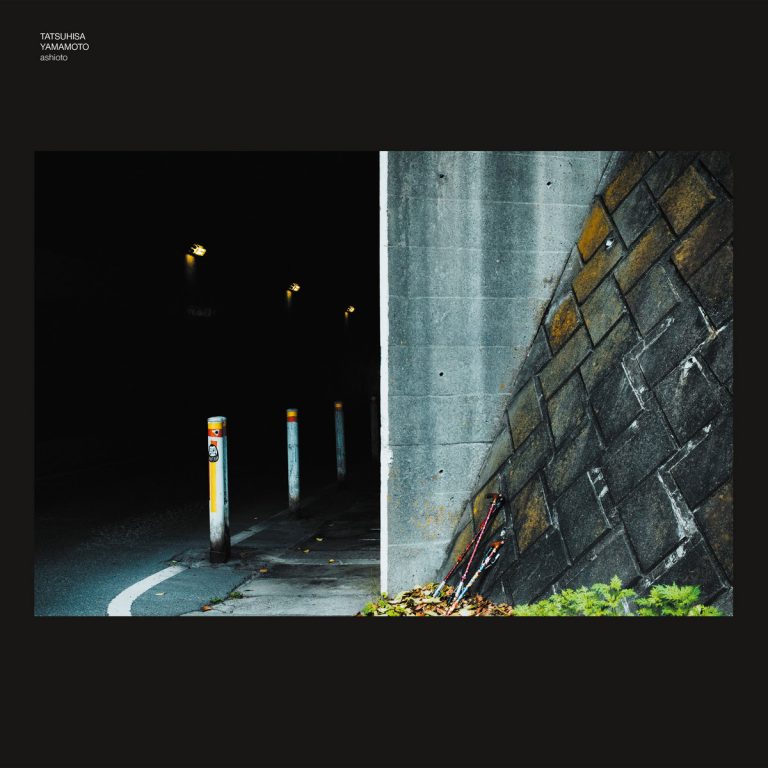You could be forgiven for not knowing it, but Tatsuhisa Yamamoto has had one hell of a year. Doesn’t that feel nice to hear? At least one of us has. More to the point, the Japanese drummer, percussionist, and composer – not to mention Jim O’Rourke and Eiko Ishibashi collaborator – has released a bevy of material, the bulk of it self-released, all leading up to his first internationally-issued LP: the Black Truffle-backed Ashioto.
Mastered by O’Rourke, the album is bold but never daunting, occasionally ominous, but never overwhelming. Its dichotomous cover art fits perfectly: not only does it boast a moody night feeling, it befits urban sprawl and machinations. Split across two tracks, each around 20 minutes, the album flows seamlessly.
“Ashioto I”, in particular, feels suited to modern Japan. Its patient, loping opening feels like a session of traditional drumming trapped within a wheezing generator (or, perhaps, a warning of a coming train, depending how you hear it). It’s, frankly, awe-inspiring, with the seemingly contradictory elements blending into something akin to pleasant terror. All of this gradually gives way to surprisingly beautiful piano notes and processed flute, with synths adding the perfect final layer.
Yamamoto’s music may not be post-rock, but it boasts that same patience, that same fleeting beauty. One moment you’re convinced the tune will never change, and, suddenly, you realize that sneakily, and ever so slowly, you’ve been thrust into an entirely evolved soundscape. “Ashioto I” continues to add layers until it reaches the closest the record comes to more traditional jazz, blanketing the listener in a pleasant groove. Even this gives way, finally, to a genuinely serene ambient closer that even Eno would surely nod in fixated approval of.
This ambient moment leads into “Ashioto II”, gradually twisting into something more haunting and pained, while still maintaining its lulling hum. Another subtle transition gradually occurs, so fully conceived and masterfully achieved that you don’t realize you’re about to be plunged into its cold waters until it’s far too late. Sparse piano chords drift in, along with eerie, unknowable concrète sound. The city is far behind now, as “Ashioto II” shifts into some sparse, dead landscape – perhaps escaping those cold waters, crawling feebly into some lost underwater cavern; wet and freezing, but ultimately of the sort that makes you want to stay and – blessedly – rest.
Soon further lulling you into your enraptured, dangerous bastion of sleep is Daisuke Fujiawara’s saxophone, equally sparse and measured. Even this layer is soon fragmented, looped and altered into a gloomy maze, with Yamamoto’s assistance gradually warping from subtle to nearly frenzied. We’ve certainly left the cavern, to where, I know not – this is the unknown now. All the while, bubbling and churning electronic elements create the feeling of nearly drowning, or, at the least, venturing ever deeper into the unfathomable depths of this urgent, beautifully terrifying ocean.
If this writer’s words have felt a tad overzealous, you’ll have to forgive him. These are genuinely the thoughts that came to mind during multiple, completely enveloping listens. You’ll simply have to see for yourself, whatever the risk. Ashioto ranks among the very best of Black Truffle’s 2020 releases, and that’s truly no small feat. Indeed, it stands towards the very forefront of avant-garde music within this dreary, brutal year. It all but demands to be heard, to have its presence felt. You may not know it, but you need it in your life.


